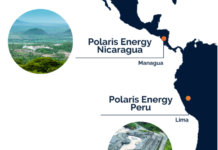Tom Konrad CFA
Hezy Ram
Geothermal industry veteran Hezy Ram has worked in the industry for over three decades. His career began with 28 years of experience at Ormat (ORA), where he was Executive Vice President of Business Development, after which he founded Ram Power Corp. (RPG.TO/RAMPF.PK) in 2009. In February, he resigned as CEO of Ram Power shortly after the company warned of significant delays and cost overruns at a key Nicaraguan project, a move he says was motivated by irreconcilable differences with other board members and major shareholders regarding the company’s strategy.

Today, he has his own geothermal company, advising clients like drilling technology innovator Potter Drilling, and lesser known but equally deserving technology innovator Geotek Energy. GeoTek’s Gravity Head Energy System, which improves geothermal plant efficiency by eliminating parasitic loads, is less flashy than Potter’s drilling innovations, but it should make many more geothermal resources economical by significantly increasing net efficiencies in the relatively near term. Ram also serves on the board of Latin American and Caribbean Council on Renewable Energy.
I caught up with Ram at the 8th Annual Renewable Energy Finance Forum Wall Street (REFF), an event co-hosted by the American Council on Renewable Energy (ACORE) and Euromoney Energy Events, and followed up with him in a phone interview this week. Ram sees a lot of potential for growth in geothermal power, but thinks the best opportunities are outside the US, while much current development is domestic. He’s looking at opportunities in developing countries himself.
High Oil Prices Create Opportunities for Geothermal Developers
In North America, current low natural gas prices are creating headwinds for geothermal by lowering wholesale price of electricity. In places like Chile, Central America, and Africa, all of which have excellent geothermal resources, most electric generation comes from oil. With oil around $100 a barrel, that means the cost of electricity exceeds 20 cents per kWh. There, geothermal can be the low cost producer of energy, and need not rely on subsidies or Renewable Portfolio Standards to create demand.
John Anderson, Head of Power and Infrastructure Investing at John Hancock, also spoke at REFF and sees the best potential for clean energy in the developing world. He said the most important question for renewable energy projects is, “Are you displacing oil?” The advantage of displacing oil is not unique to geothermal, but where good geothermal resources exist, geothermal power is not only cheaper than solar and all but the best wind resources, but it’s baseload power, and easier to integrate onto the electric grid.
Drilling on King Street
The other opportunity he sees is consolidation in the industry. Like many industry observers (myself included; see this recent article on Nevada Geothermal Power (NGP.V/NGPLF.PK), Ram sees an industry ripe for consolidation. He sees a sector currently at a low point in investor attention, and there is a lot of unrecognized value in geothermal companies.
He also thinks that consolidation would be good for the junior public companies. Speaking with the voice of painful experience, he describes the mismatch between investor expectations and the small plays and long lead times of geothermal projects. The market expects regular news updates, but there is not much to say when you spend a year on permitting, while compliance and committee meetings are a distraction from running the company. He thinks only Ormat has the billion dollar scale to afford the distractions of being public.
The smaller geothermal players (Ram Power, Nevada Geothermal, Alterra Power (AXY.TO/MGMXF.PK), and US Geothermal Power (HTM)) would all benefit from the scale and cheaper funding that would come with consolidation. Since three of the four are listed on the Toronto Stock Exchange, I like to call this strategy “Drilling on King Street,” in homage to the oil and gas industry tradition of drilling on Wall Street when reserves get hard to find through traditional exploration.
Possible Consolidators
Which companies might start drilling on King Street?
The most obvious consolidators are those already in the geothermal industry. I’ve been surprised that Ormat has not already made a move to acquire the cheap assets available on King Street, given that they have signed up for a more expensive joint venture with Nevada Geothermal just last year, but one reason for the lack of action may have been the financial position of the controlling Bronicki family. On July 7, it was announced that the family is in negotiations to sell a large stake in Ormat’s Isreali parent company, Ormat Industries (ORMT.TA) to cover debts. If the sale goes through, holding company Shikun & Binui (SKBN.TA) is expected to be the major shareholder. Shikun & Binui describes itself as “a leading infrastructure, real-estate and environmental group,” and already operates some renewable energy and energy efficiency projects internationally. Israeli Analyst Shay Lipman said “Ormat combines excellently with Shikun U’Binui’s portfolio.” Will other geothermal companies combine equally well?
In addition to internal industry consolidation, Ram sees two types of companies for which he thinks it makes sense.
The first of these are the traditional drillers on Wall Street: Oil and Gas companies. They have expertise with much of the same equipment and techniques used in geothermal, money to spend, and could benefit from the positive PR, such as that used by Chevron around their Philippine and Indonesian geothermal assets.
The other group he thinks might become interested is utilities, following the pattern with wind and solar, where companies like NextEra Energy (NEE) are large players. NextEra used to be known as FPL Group after its utility subsidiary Florida Power and Light, but set up a large wind and solar development arm and re-branded itself to reflect the new focus on green power.
Conclusion
Will a utility or an Oil and Gas major be the first to decide that the opportunities to pick up quality geothermal projects for little more than spare change on King Street are worth moving into a new (but related) industry? I think Oil and Gas is more likely, since they are more accustomed to accepting drilling risk. While Independent Power Producer Calpine Corp. (CPN) has significant geothermal assets, these were all acquired when they were already operating, not during exploration and development.
But the more important question for investors considering geothermal companies as an out of favor value play is: When will a consolidator appear? Neither I nor Ram has the answer to that one.
DISCLOSURE: Long RAMPF, NGPLF, MGMXF, HTM.
DISCLAIMER: Past performance is not a guarantee or a reliable indicator of future results. This article contains the current opinions of the author and such opinions are subject to change without notice. This article has been distributed for informational purposes only. Forecasts, estimates, and certain information contained herein should not be considered as investment advice or a recommendation of any particular security, strategy or investment product. Information contained herein has been obtained from sources believed to be reliable, but not guaranteed.







